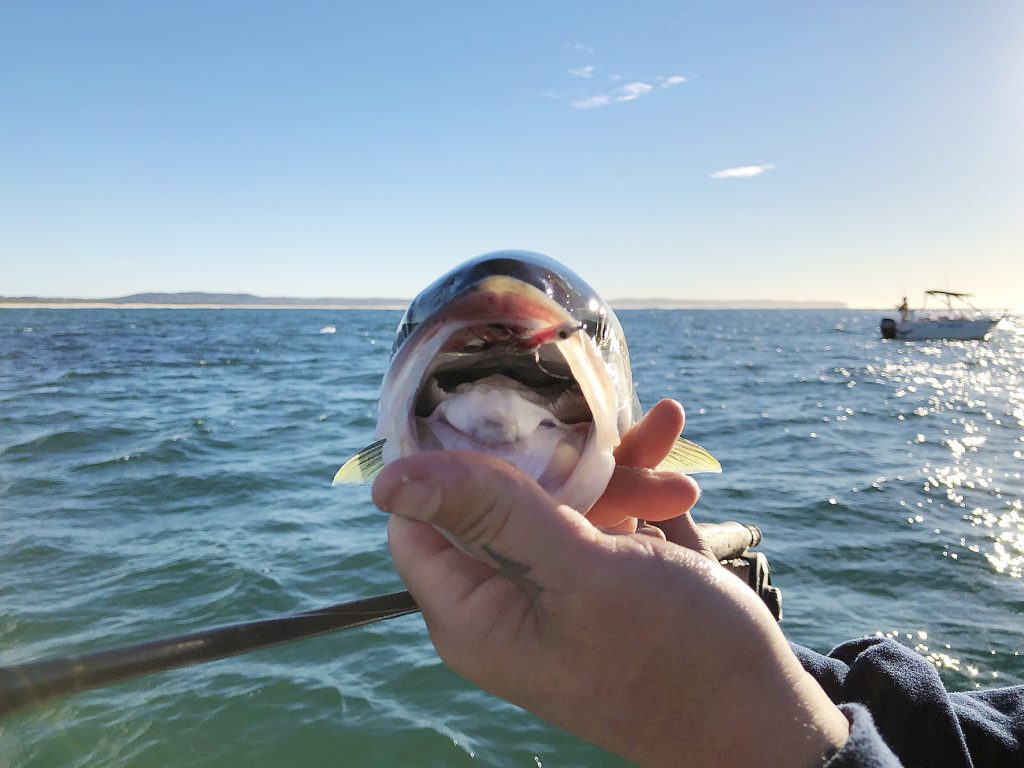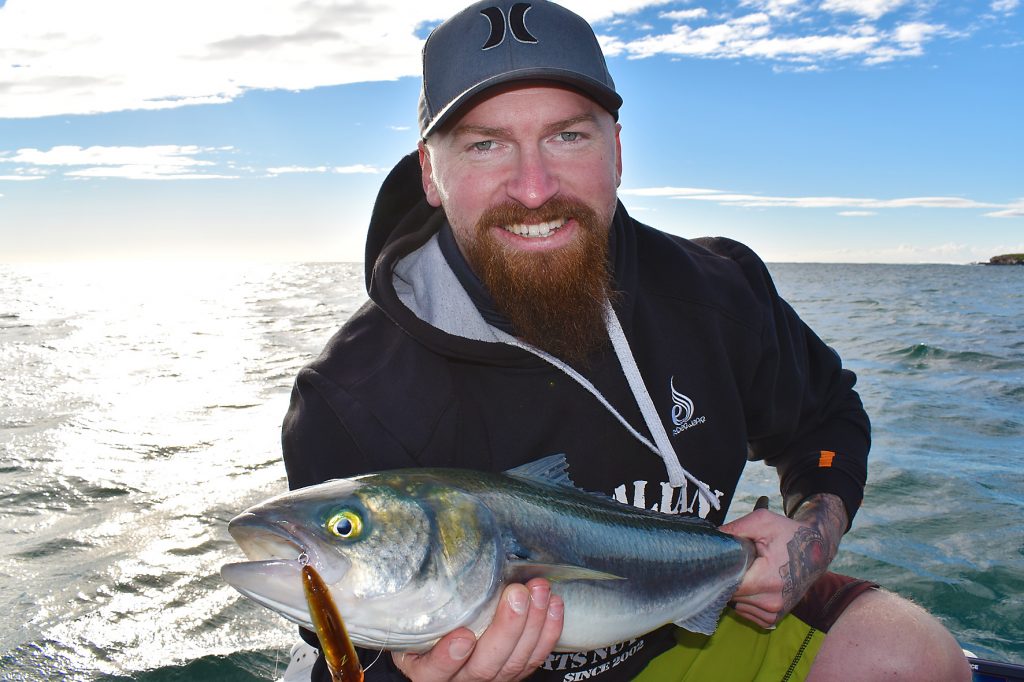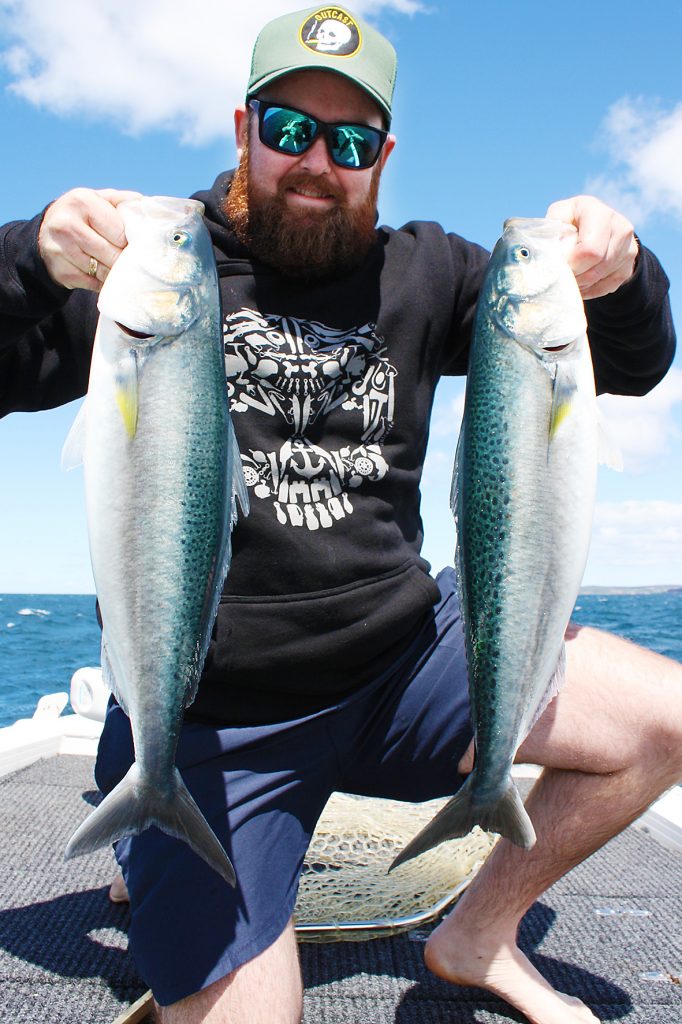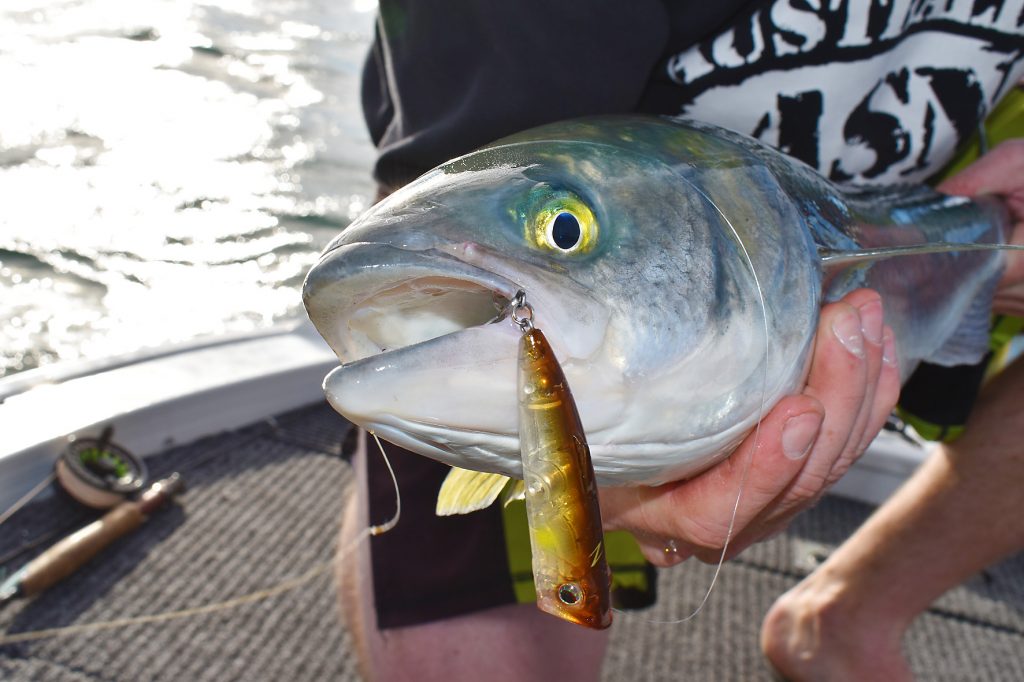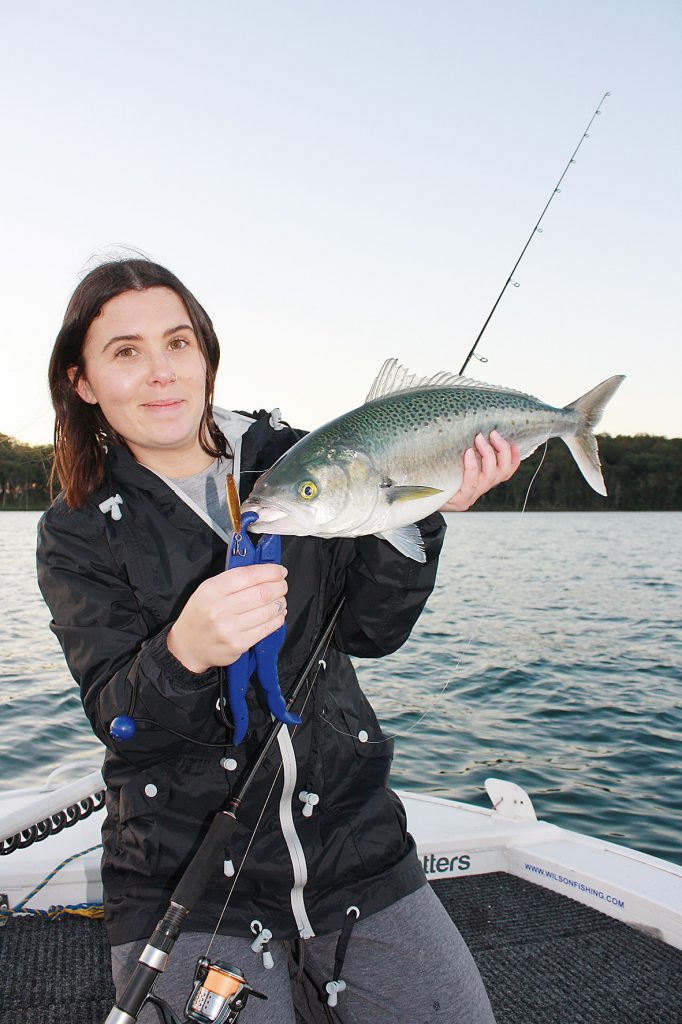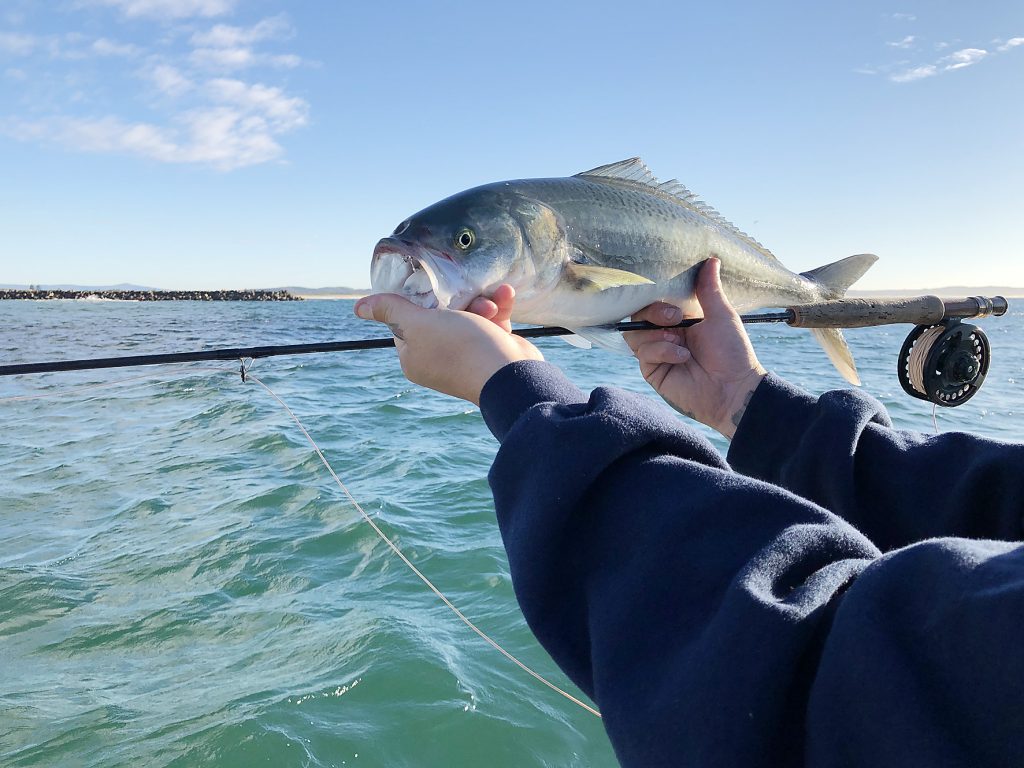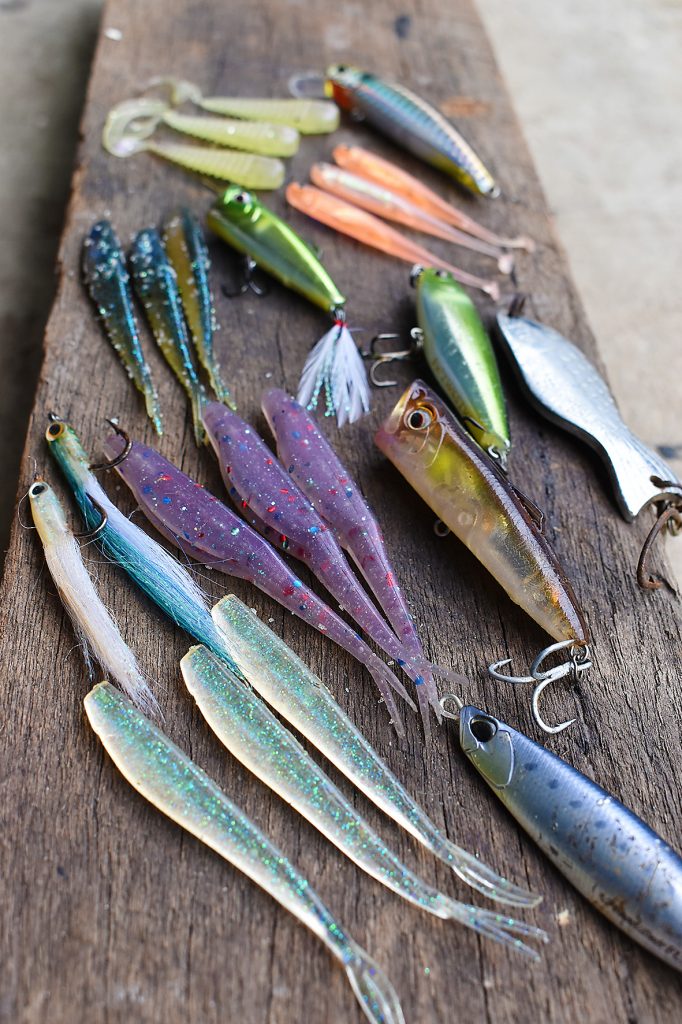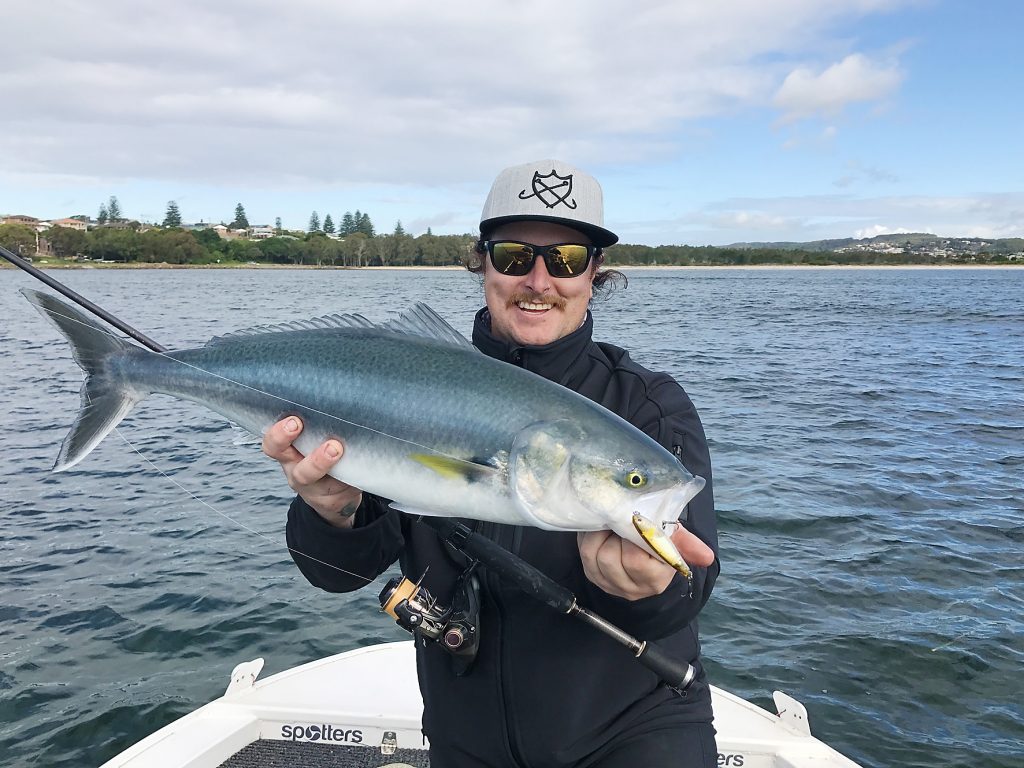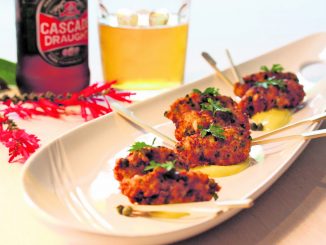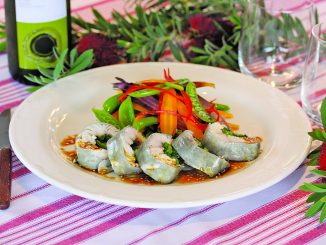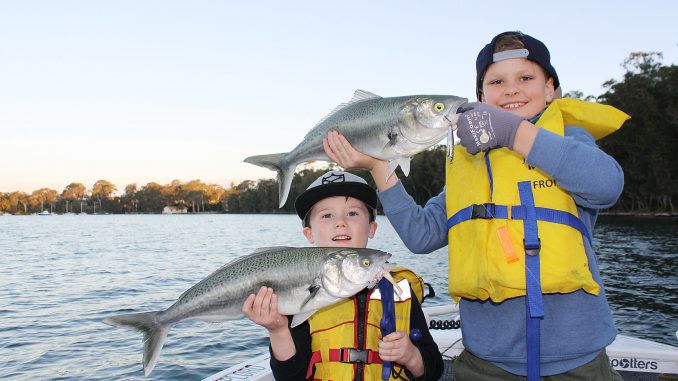
by Joel Edwards •
As we approach the coldest part of the year here in New South Wales, there’s an abundance of hot angling opportunities to be excited about.
In this article I’ll be focussing on one of our cool water sportfishing targets. Arripis trutta or Australian salmon are the epitome of sensational light tackle sportfish. I mean, what’s not to love? They are dogged fighters, willing lure and fly takers, and are striking in appearance. Their acrobatic performance above the surface is matched with line-burning, drag-scorching runs that will empty your reel quick smart. Their erratic directional changes will keep you on your toes as well; Aussie salmon give their absolute all until the very end of the fight.
These Aussie battlers can be found right down the coast, from Tweed Heads through to Port Philip Bay in Victoria and even in Tasmania, so there’s literally miles of coastline where salmon can be encountered.
These speedsters are always on the move, and a yearly migration is a huge part of the salmon’s lifecycle. They follow those comfortable, ‘feel good’ conditions up and down our coastline in search of various food sources, including tiny pelagic baitfish, krill, squid and pilchards. Salmon can be often found in large schools, herding small baitfish into nervous, quivering balls of anxiety, shadowed by the ever-present flocks of sea birds. Salmon are regularly accompanied by tailor, which are a welcome by-catch.
WHERE THE BLOODY HELL ARE YA?
‘Sambos’ turn up in the strangest places at times, but they do have some regular hangouts where they like to loiter and harass those poor little baitfish. Focussing your pursuit around river mouths, beach gutters/holes, estuarine lakes and headland washes will have you well on your way to tangling with these powerful opponents.
In my local hangout on the Central Coast of New South Wales, we experience an influx of Australian salmon schools that have to be seen to be believed. Football field-sized schools can be found moving in and out of Swansea channel, which is the narrow entrance to Lake Macquarie.
These beautifully marked fish usually first start showing their faces around the large full moon tides of the month of May, and can usually be found in the area right through until the middle of spring.
HOW DO I FOOL THEM?
Australian salmon can have some serious mood swings when they are feeding. Sometimes they can be downright ferocious feeders, eating literally everything you throw at them. You can see them competing for the lure or fly, pushing each other out of the way to inhale the bait. It’s incredible to experience a hot salmon bite like this, and it’s not uncommon to break double figures in a short timeframe. Topwater lures, soft plastics, metal slices, flies, hardbodied minnows – they’ll eat it all.
A word of warning though: you have to strike while the iron is hot. Sambos are the masters of the shut down! They can turn off like a light switch for a variety of reasons, such as angling pressure, tidal movement, barometric pressure or being fixated on a certain baitfish. At times like these the salmon are very hard to tempt. In super clear, shallow water you can regularly have the privilege of watching these fussy buggers refuse every lure or fly you drag past their pompous little noses.
In times like this, only the most subtle approach will work. If you want to turn refusals into follows and then into strikes, you should choose a super light fluorocarbon leader of 4lb or less, scale down your lure size and profile, and (most importantly) slow down your retrieve speed.
This is the epitome of finesse fishing, and it can be the only tactic that will unlock those stubborn jaws.
Now that you’re using trout tackle to interest these bruisers, remember to fish with a nice, light touch. Salmon will lunge with zero warning and peel line on even the most well adjusted drag setting. Without a calm, soft hand they will easily break your fine lines with their sudden directional changes and powerful lunges.
So lighten up your approach when these guys are having a sook for whatever reason, and I assure you – success won’t be far away.
WHAT DO THEY EAT?
Now that we’ve established where salmon can be found, let’s take a look at which baits will tempt them.
Headland hoppin’
When in search of sambos from the rocks, I’ve found that a fast moving metal slice, such as a SureCatch Knight, is irresistible to a hungry salmon pod. Early in the morning and late in the afternoon are ideal times to go for a wander. A long cast followed by a quick retrieve as soon as the lure enters the water is super productive. You get the feeling they’re hitting the slice on instinct, rather than following it for a long time to decide whether it looks edible.
Salmon are not afraid to launch themselves out of the water, and have evolved to be the masters of aerial head shakes, often throwing the hooks and earning their premature freedom. I like to combat this by swapping out the standard treble hooks on my metals and retrofitting the bait with opposing single hooks. Spending a little more time tinkering with your hook set-up can keep the hooks in those cunning acrobats a little better.
This technique is equally as productive from the sand when the salmon are patrolling the beach gutters and holes.
Beach combing
Another really productive way to target Australian salmon is to hit the beach, find a nice gutter, and send out a bait. The sambos can be regularly found mooching close to shore feeding and resting in the turbulent water the beach offers.
This is a great place to dust off the favourite Alvey side caster, 12ft rod (I use Snyder Glas), soak a bait, sit back and relax. Australian salmon are very much an opportunistic species, and can be super susceptible to a well-presented flesh bait.
The top salmon bait in New South Wales waters is the humble pilchard. Whether you rig it on ganged hooks or a two-hook snelled rig, it’s a great way to come into contact with these awesome sportfish.
In the estuary
These bullish Aussie battlers often sneak into the calmer waters of our rivers and coastal lakes in search of the plentiful tiny baitfish that call these diverse waters home. When chasing these predators in the calmer waters, we really need to scale down the size of the lures we use. A lot of the time the hatch you are matching is quite small, and this is where the finesse approach comes into its own; presenting your bait on light lines will maximize the natural manner in which your bait moves. Finesse fishing also increases the sport, which is what salmon are all about! An Aussie salmon on bream tackle is too much fun.
If you’re a braid and fluoro fisho, just go light on both and go for a little bit of a longer, softer tip rod. This will help you no end during the fight to combat those trademark lunges I spoke of earlier.
If you’re a mono or fluoro straight through kind of guy, you’re already at an advantage because the line itself will provide you with a better amount of shock absorption thanks to its natural stretch. Mono lines will also help with your lure presentation when throwing topwater offerings because the line floats, so isn’t working counter intuitively against your surface bait.
Soft plastics rigged weedless or on a light jighead work very well in the estuary, as do small metal slugs rigged with single hooks. Both baits can be fished at varying depths and with speeds, and both can be found in most sizes that will match pretty much any baitfish.
Armed with this information, it’s now time for you to get out there and target salmon, and maximize your sessions over the cooler months. You’ll have a lot of fun tangling with these very underrated sportfish.
JJ’s top 3 tips
- Vary your retrieve speed to find out exactly what they want.
- Extend your leader or trace length a little bit more for salmon. The extra length gives you more stretch and increases the odds of the hooks staying in the mouth of these acrobats.
- Always keep an eye on bird activity. These feathered friends are our eyes in the sky, and at times this is the key to the salmon’s whereabouts.

